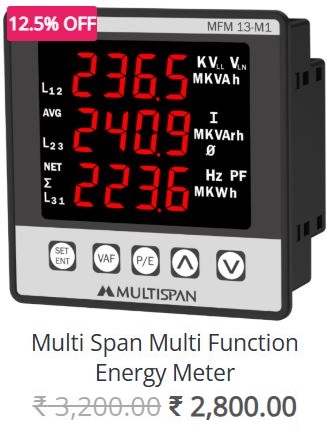In today’s world, environmental sustainability is more important than ever. Industries, regulatory bodies, and environmental organizations are all working together to ensure that we reduce pollution, conserve natural resources, and promote overall environmental health. One of the most critical tools in this effort is instrumentation—devices and technologies designed to monitor, measure, and control environmental conditions.
Instrumentation plays a pivotal role in achieving and maintaining environmental compliance. It ensures that businesses adhere to environmental regulations, reduces risks of non-compliance, and helps organizations implement proactive environmental management strategies.
What Is Environmental Compliance?
Environmental compliance refers to adhering to local, regional, or global laws and regulations set forth to protect the environment. These regulations cover a broad range of activities such as air and water quality monitoring, waste disposal, emissions control, and more. Businesses, governments, and organizations must ensure they meet these standards to minimize their environmental impact, avoid penalties, and operate sustainably.
The Role of Instrumentation in Environmental Compliance
Instrumentation encompasses a wide range of devices and systems that provide accurate data for monitoring and controlling environmental factors. These tools can detect, measure, and report parameters like air quality, water purity, waste levels, and noise pollution. Here’s a look at how instrumentation supports environmental compliance:
1. Continuous Monitoring and Real-Time Data Collection
One of the primary advantages of modern instrumentation is the ability to provide continuous, real-time data. Continuous emissions monitoring systems (CEMS), for example, track pollutants in air emissions 24/7. This data can be used to assess compliance with emission standards, alerting operators immediately if pollution levels exceed acceptable thresholds. Having such instruments in place ensures that businesses can continuously meet environmental requirements and make adjustments if needed.
2. Early Detection of Environmental Issues
By integrating automated monitoring systems, businesses can detect environmental issues before they escalate into major problems. Instrumentation can identify trends in environmental data, flagging potential risks and enabling proactive interventions. For example, sensors can monitor water bodies for signs of contamination or alert operators if a hazardous substance is leaking. Early detection helps prevent environmental disasters, reduces fines for non-compliance, and ensures the long-term protection of natural resources.
3. Accurate Data for Reporting and Compliance
Environmental regulations often require businesses to submit detailed reports on their environmental impact. These reports are typically based on data collected from instruments monitoring air quality, water quality, waste disposal, and other environmental factors. Accurate, reliable data ensures that these reports are truthful and compliant with regulatory requirements. Additionally, the use of automated data collection minimizes the risk of human error and fraudulent reporting.
4. Reduced Risk of Non-Compliance Penalties
Non-compliance with environmental regulations can result in severe penalties, including fines, legal actions, and even shutdowns. The use of instrumentation reduces the risk of falling out of compliance. By continuously monitoring environmental parameters and staying ahead of regulatory limits, businesses can avoid unexpected violations and costly penalties. This not only protects the business from financial risks but also enhances its reputation as a responsible and environmentally-conscious entity.
5. Optimization of Environmental Operations
Instrumentation can also help companies optimize their environmental operations. By collecting detailed environmental data, organizations can identify inefficiencies, streamline processes, and implement changes that improve sustainability. For example, monitoring air filtration systems and emissions sources can help optimize energy use, reduce emissions, and save on operational costs. Over time, businesses that utilize instrumentation for environmental management can achieve a more sustainable balance between profitability and compliance.
Types of Instrumentation Used in Environmental Compliance
The types of instruments used for environmental monitoring vary widely depending on the environmental parameter being monitored. Here are some common examples:
- Air Quality Sensors: Measure pollutants like nitrogen oxides (NOx), carbon monoxide (CO), sulfur dioxide (SO2), and particulate matter.
- Water Quality Sensors: Measure factors like pH levels, dissolved oxygen, turbidity, and concentrations of hazardous chemicals or pathogens in water.
- Emissions Monitoring Systems (CEMS): Continuously monitor and report emissions from industrial processes, including greenhouse gases and other airborne pollutants.
- Waste Monitoring Instruments: Track hazardous or non-hazardous waste levels, preventing improper disposal and ensuring regulatory compliance in waste management.
- Noise and Vibration Sensors: Monitor sound levels and vibrations in sensitive areas, ensuring compliance with local noise ordinances.
Conclusion: A Crucial Investment for Long-Term Success
As environmental regulations continue to evolve and become more stringent, businesses must make strategic investments in instrumentation to remain compliant and minimize their environmental impact. These tools not only help organizations monitor and control pollution but also improve operational efficiency, reduce risks, and ensure long-term sustainability.
By embracing advanced instrumentation technologies, businesses can foster a culture of environmental responsibility, promote compliance, and contribute to the global effort toward a cleaner, healthier planet. Environmental compliance is not just a legal obligation—it’s an opportunity to innovate and lead in an increasingly eco-conscious world.
Whether you are a manufacturing plant, waste management facility, or any other business with environmental responsibilities, investing in the right instrumentation is an essential step towards protecting both your bottom line and the environment.















